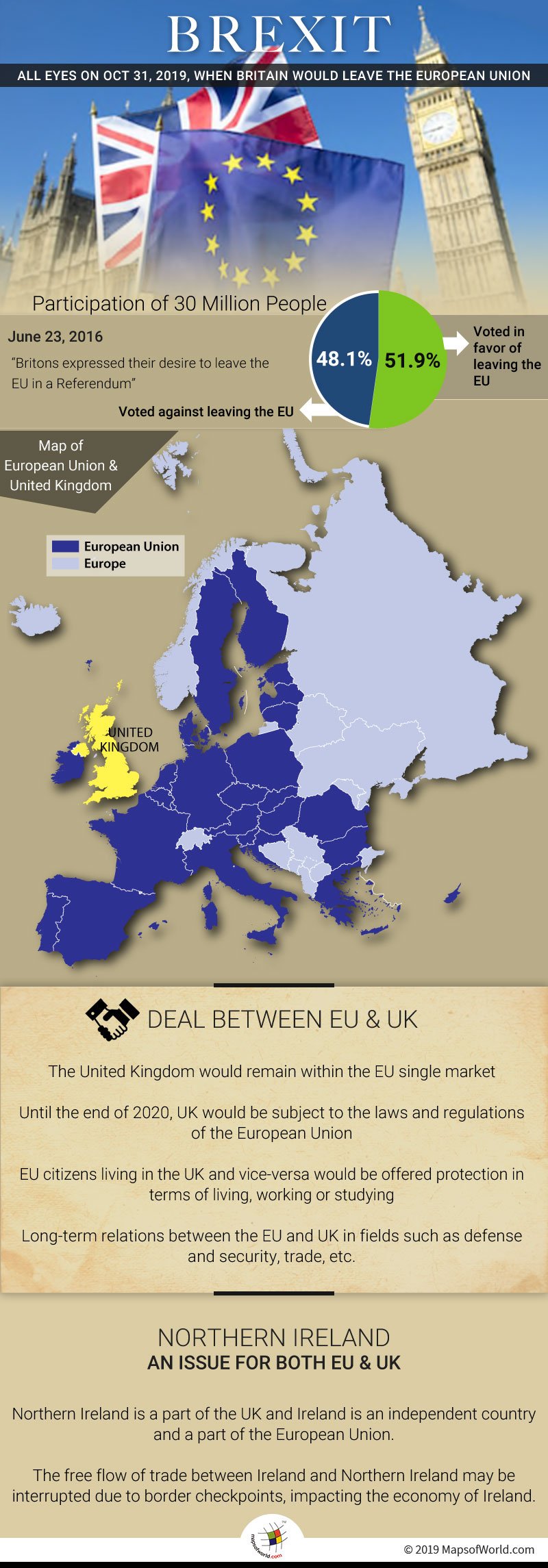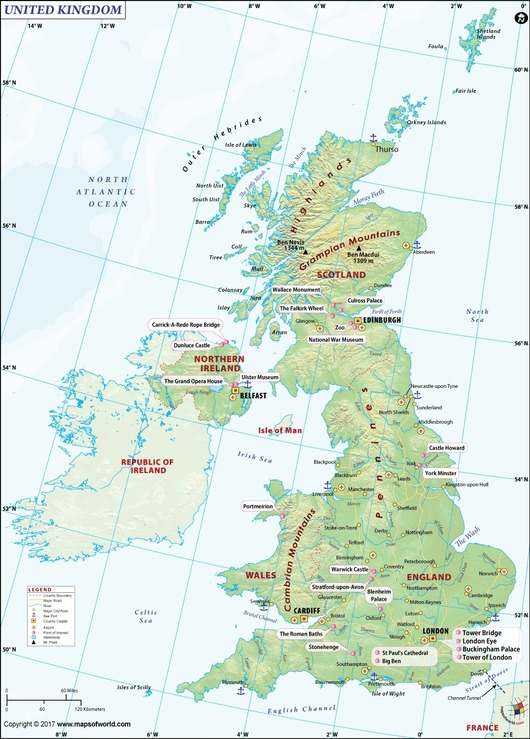What is The Current Situation of Brexit?

All eyes are on October 31, 2019, when Britain would leave the European Union. The United Kingdom is one of the most significant members of the European Union, which is among the most powerful economic blocs in the world. Britons expressed their desire to leave the EU in a referendum that was held on June 23, 2016. The referendum saw 51.9 percent voting in favor of leaving the European Union, while 48.1 percent were against it. More than 30 million people had taken part in the referendum, which roughly translates to 71.8 percent. Nevertheless, the referendum was uneven across the country. While England and Wales were in favor of leaving the EU, Scotland and Northern Ireland were against it. In England and Wales, 53.4 percent and 52.5 percent opted for Brexit, while in Scotland and Northern Ireland, 62 percent and 55.8 percent were against leaving the EU.
The earlier deadline was fixed for March 31, 2019, with Prime Minister Theresa May at the helm. With the date nearing, both the European Union and the United Kingdom had agreed on a deal comprising two parts – the withdrawal agreement which was 585 page long and a statement on future relations comprising 26 pages.
The former was legally binding and outlines the terms of the United Kingdom’s departure from the European Union. However, under this agreement, the United Kingdom would remain within the EU single market. Until the end of 2020, the United Kingdom would be subject to the laws and regulations of the European Union. Further, EU citizens living in the UK and vice-versa would be offered protection in terms of living, working or studying. According to the estimates, more than 1 million UK nationals are in the EU member countries, while the UK hosts 3 million EU citizens. Meanwhile, the 26 page statement was not legally binding. This statement deals with the long-term relations between the EU and UK in fields such as defense and security, trade, etc. However, in a vote in the parliament on the 585 page agreement, members rejected the vote, 432-202. There were disagreements in the UK Parliament and the date of Britain’s departure from the EU was postponed to October 31, 2019. On the other hand, as per a December ruling of the European Court of Justice, UK could cancel the Brexit process and remain EU’s member on existing terms, but the process should be a democratic one. But, as of now, the new deadline stands at October 31 with or without a deal. Also, Theresa May has stepped down, and in her place Conservative hardliner Boris Johnson has assumed charge of prime ministership since July 24, 2019. The new foreign secretary Dominic Raab has voiced the opinion that a no-deal Brexit would in fact prove more useful to the United Kingdom in negotiating a sweeter deal with the EU.
One issue that is troubling both the EU and the UK is the border between Northern Ireland and Ireland. Northern Ireland is a part of the UK and Ireland is an independent country and a part of the European Union. Currently, there is a free flow of trade between Ireland and Northern Ireland as the border is open. In the scenario of Britain exiting from the EU, the situation can change. The setting of border checkpoints will surely slow down the movement with a deep economic impact. To keep the borders open, the Irish backstop arrangement is also included in the deal. The Parliament was in favor of replacing the Irish backstop arrangement with an alternative arrangement avoiding hard border, but the EU has refused to renegotiate the original deal. Another issue is the presence of EU nationals living and working in the UK. The new administration has made verbal promises to safeguard their rights, but without a proper legislation in place, uncertainties will always remain.
Related Links:
